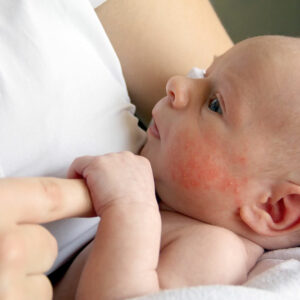Atopic dermatitis: 6 foods to eat and avoid

Eczema or atopic dermatitis is an inflammatory skin condition. Though it’s common in children, it can affect people at any age. Since the condition is the result of inflammation in the body, eating anti-inflammatory foods and avoiding pro-inflammatory or trigger foods can provide relief from the symptoms to some extent. Herein, we look at foods to eat and avoid for managing atopic dermatitis. But, before that, let’s briefly discuss the early signs and symptoms of the disease.
Early symptoms of atopic dermatitis
In most cases, the signs and symptoms of atopic dermatitis begin before the age of five and may continue into adolescence and adulthood. However, one should be aware that the disease tends to manifest differently in different individuals. Some common early symptoms may include dry skin, itchy skin that worsens at night, tiny bumps, and red to brownish-gray patches on the limbs, upper chest, and eyelids.
Foods to eat
The following foods can help reduce atopic dermatitis symptoms:
Salmon
Salmon is a fatty fish and a storehouse of Omega-3 fatty acids. Omega-3s are healthy fats that can combat inflammation in the body, alleviating symptoms of atopic dermatitis.
Yogurt
Yogurt is rich in probiotics. These are healthy gut bacteria that can bolster the immune system and reduce flare-ups or allergic reactions. Those who don’t prefer to consume yogurt can try other probiotics-rich foods and drinks like kefir, kombucha, and sauerkraut.
Blueberries
Blueberries contain a flavonoid called quercetin. Quercetin gives blueberries their rich color and is also an antioxidant and antihistamine. In other words, it can bring down levels of inflammation and histamine in the body.
Foods to avoid
To manage atopic dermatitis, it’s important to steer clear of certain foods, such as:
Cow’s milk
Cow’s milk is a common cause of atopic dermatitis flare-ups, especially in children. However, it contains vital nutrients required for a child’s overall development, so it’s important to speak to a doctor before eliminating milk from a child’s meals.
Oranges
Indeed, oranges are nutritious and an excellent source of vitamin C. But they also contain Balsam of Peru (Myroxylon pereirae), an allergen that can exacerbate atopic dermatitis in some people. It’s best to also avoid other citrus fruits like lemons and grapefruit.
Eggs
Eggs are another common culprit of atopic dermatitis flare-ups in children. It’s advisable to completely avoid feeding children scrambled or fried eggs as well as other foods that may contain eggs, such as bread and baked goods.



